Abstract
The stability of the natural populations of fecal coliforms and fecal streptococci in raw sewage diluted 1:1,000 in seawater or phosphate-buffered water at 24 +/- 2 degrees C was markedly affected by the absence or presence of sunlight. In the absence of sunlight, these bacteria survived for days, whereas in the presence of sunlight 90% of the fecal coliforms and fecal streptococci were inactivated within 30 to 90 min and 60 to 180 min, respectively. The bactericidal effect of sunlight was shown to penetrate glass, translucent polyethylene, and at least 3.3 m of clear seawater, suggesting that the visible rather than the ultraviolet light spectrum of sunlight was primarily responsible for the observed bactericidal effect. However, these same sewage-borne bacteria were relatively resistant to the bactericidal effect of sunlight when diluted in fresh mountain stream waters. These results indicate that the presence of sunlight is a major factor controlling the survival of fecal coliforms and fecal streptococci in seawater.
Full text
PDF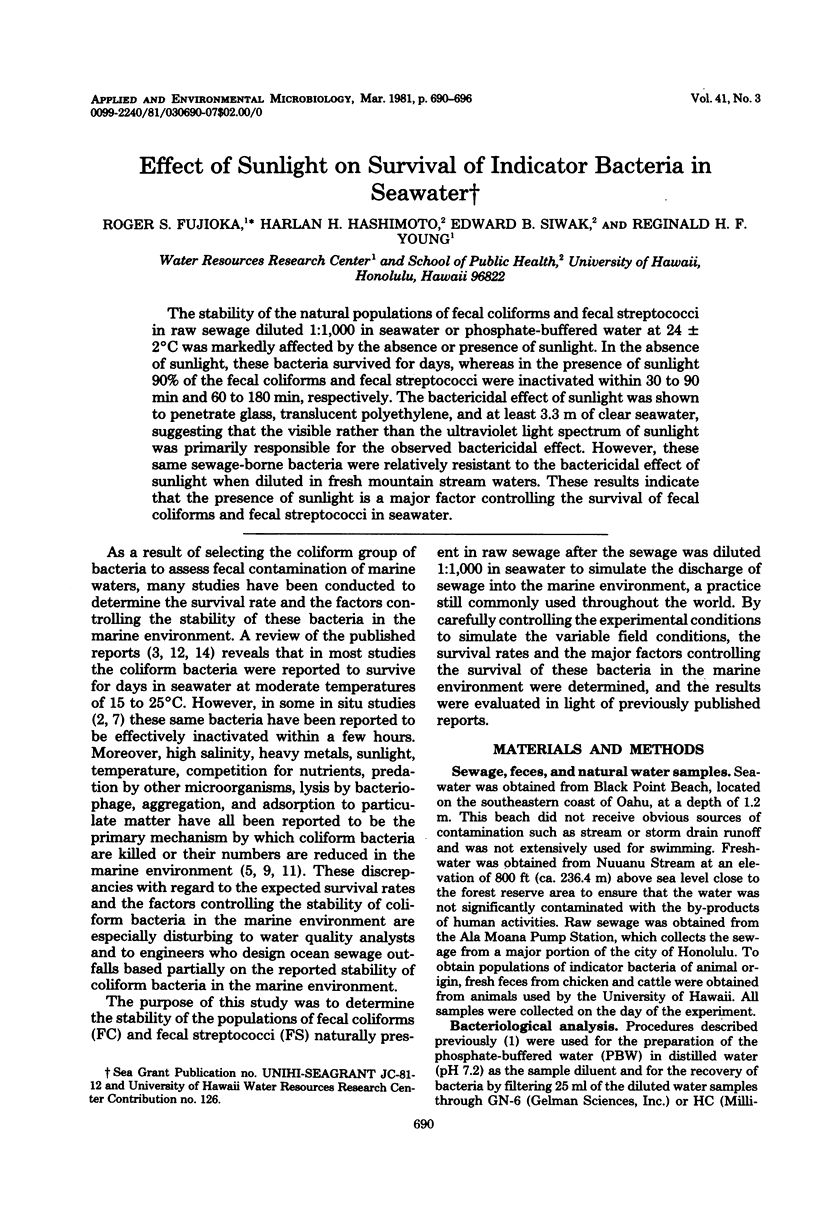
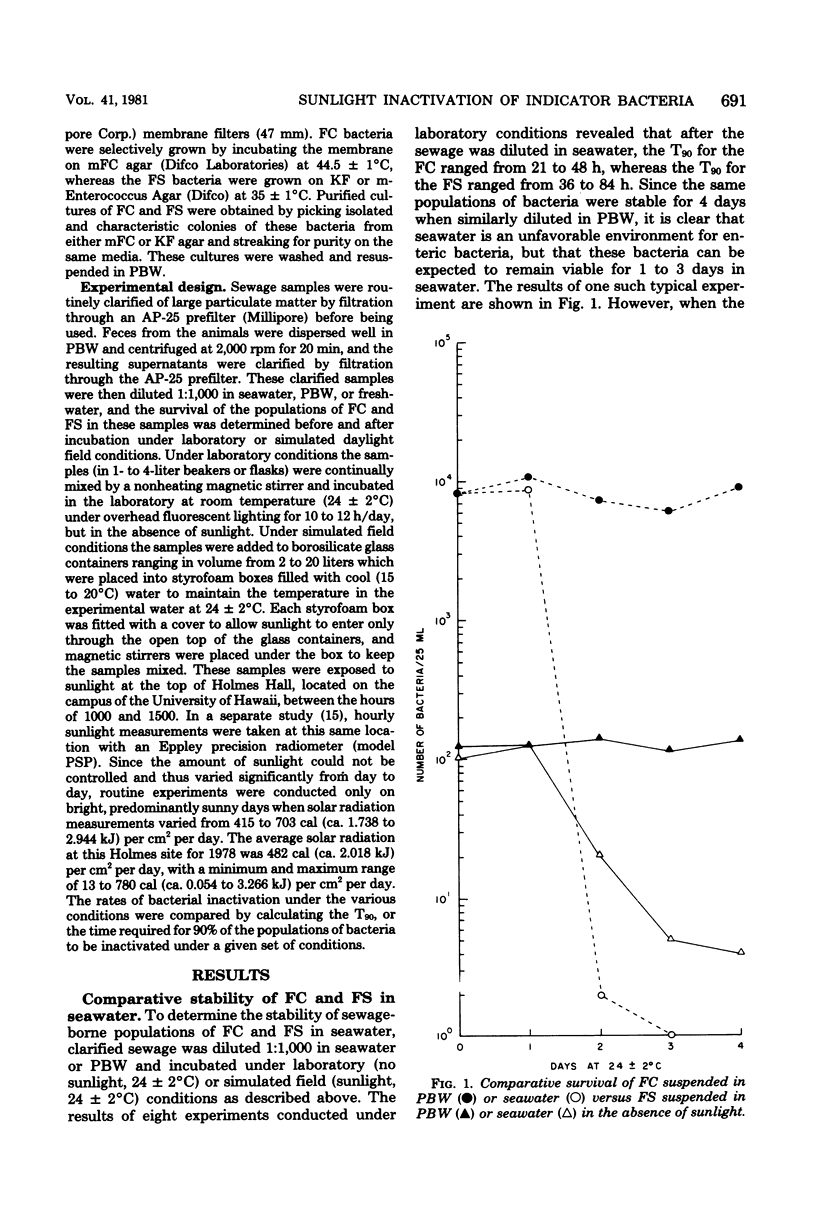
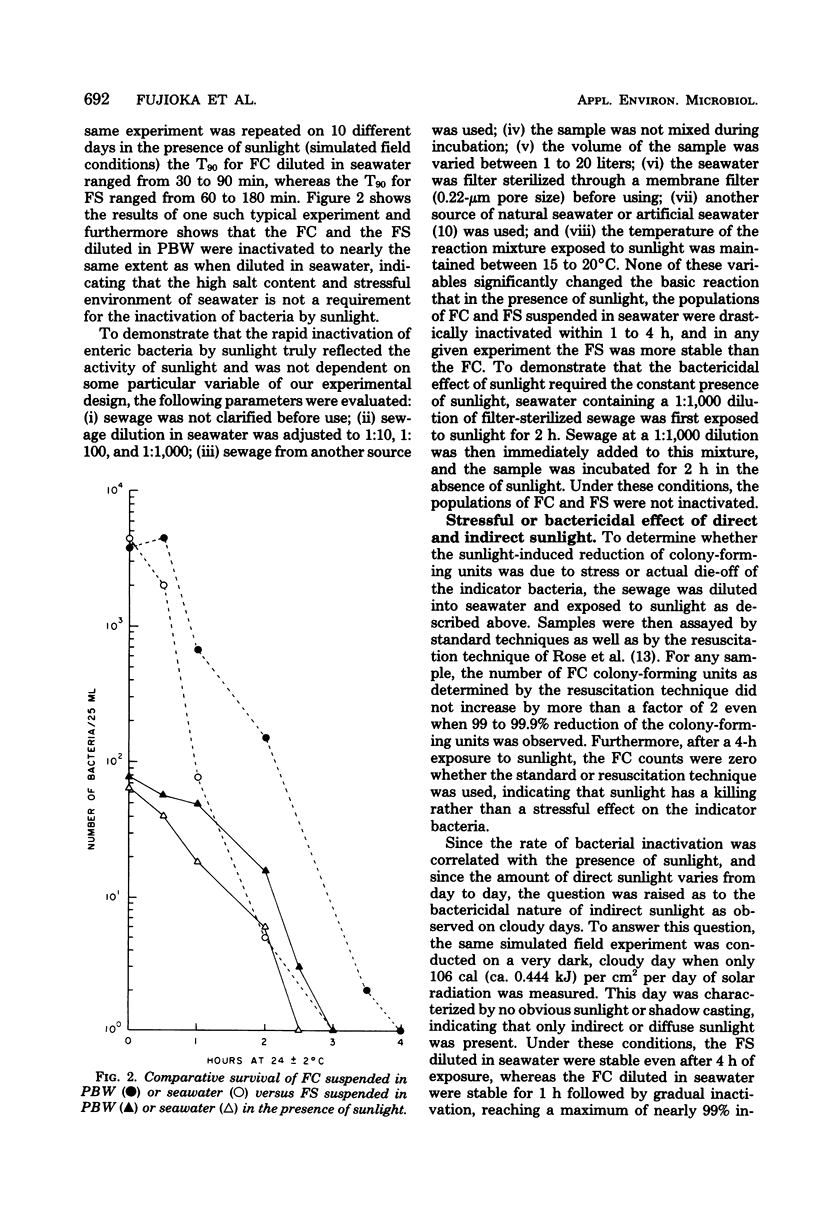
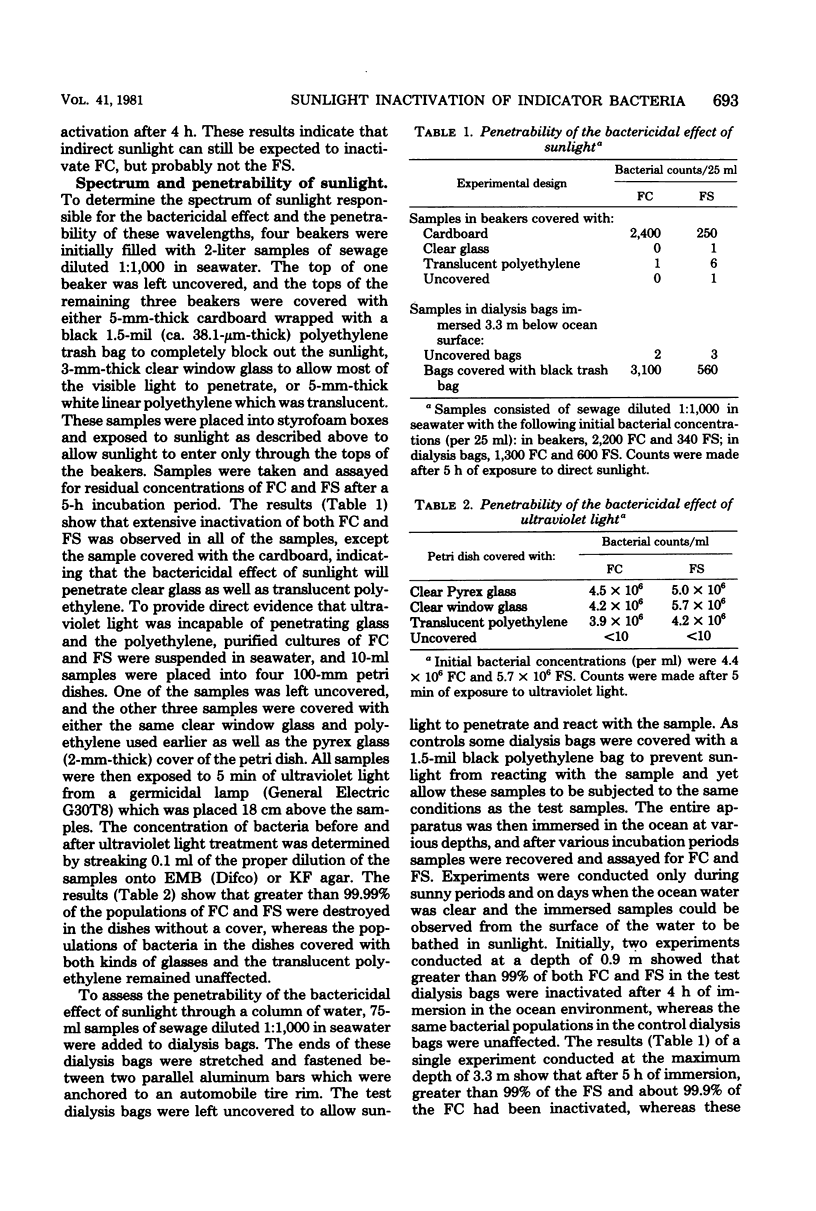
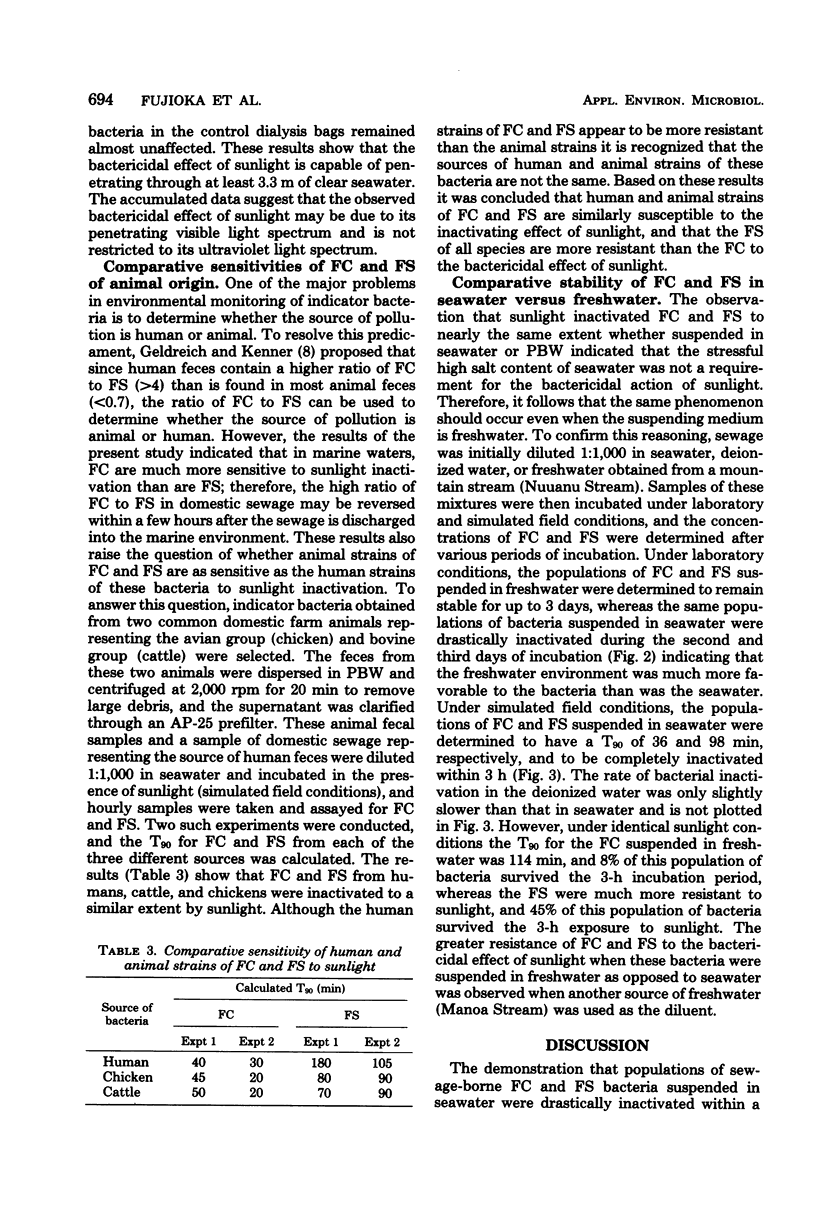
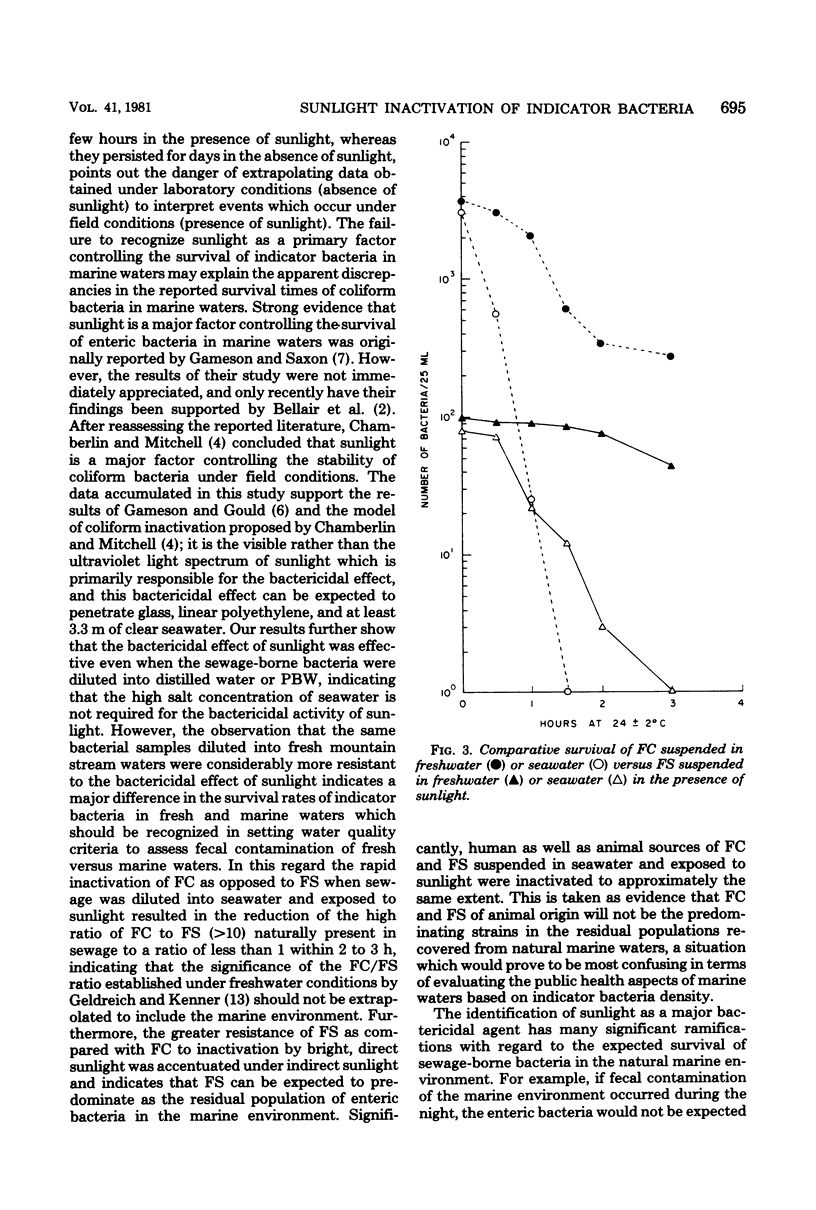
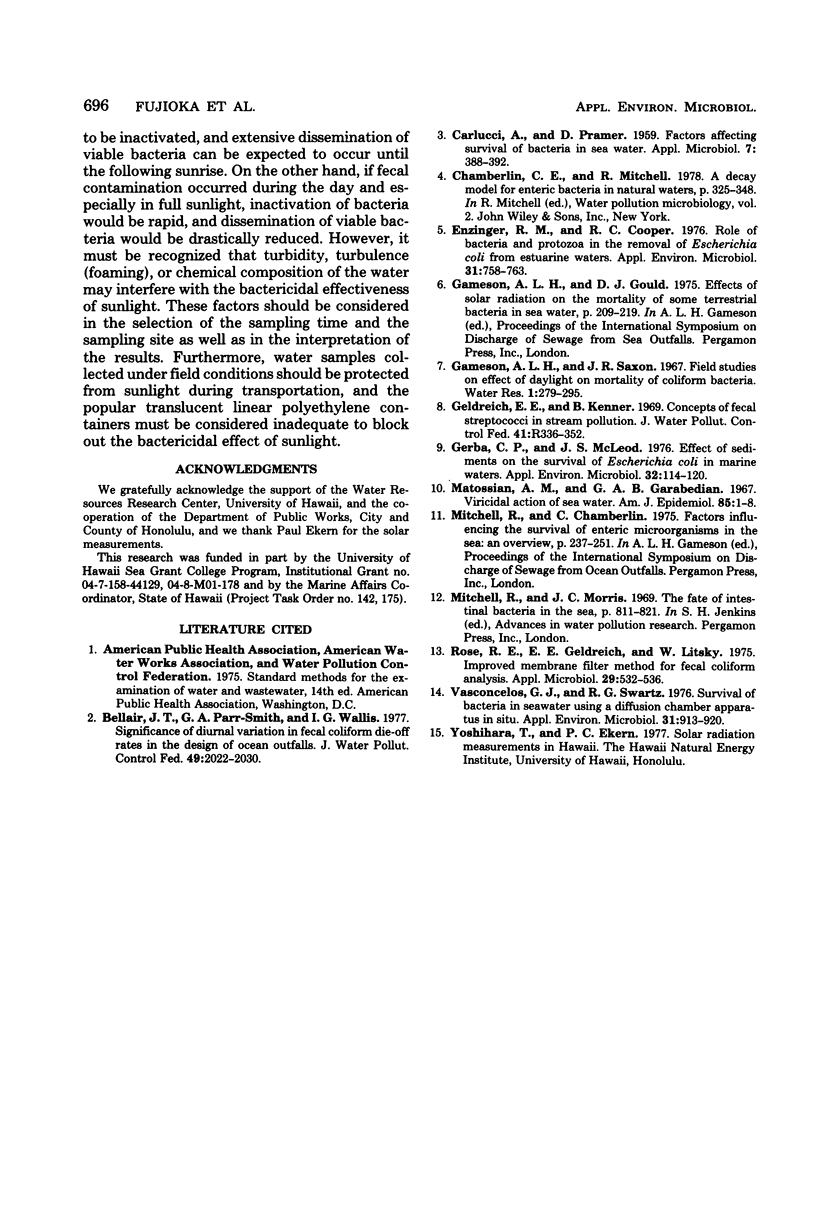
Selected References
These references are in PubMed. This may not be the complete list of references from this article.
- CARLUCCI A. F., PRAMER D. Factors affecting the survival of bacteria in sea water. Appl Microbiol. 1959 Nov;7:388–392. doi: 10.1128/am.7.6.388-392.1959. [DOI] [PMC free article] [PubMed] [Google Scholar]
- Enzinger R. M., Cooper R. C. Role of bacteria and protozoa in the removal of Escherichia coli from estuarine waters. Appl Environ Microbiol. 1976 May;31(5):758–763. doi: 10.1128/aem.31.5.758-763.1976. [DOI] [PMC free article] [PubMed] [Google Scholar]
- Geldreich E. E., Kenner B. A. Concepts of fecal streptococci in stream pollution. J Water Pollut Control Fed. 1969 Aug;41(8 Suppl):R336+–R336+. [PubMed] [Google Scholar]
- Gerba C. P., McLeod J. S. Effect of sediments on the survival of Escherichia coli in marine waters. Appl Environ Microbiol. 1976 Jul;32(1):114–120. doi: 10.1128/aem.32.1.114-120.1976. [DOI] [PMC free article] [PubMed] [Google Scholar]
- Matossian A. M., Garabedian G. A. Virucidal action of sea water. Am J Epidemiol. 1967 Jan;85(1):1–8. doi: 10.1093/oxfordjournals.aje.a120666. [DOI] [PubMed] [Google Scholar]
- Rose R. E., Geldreich E. E., Litsky W. Improved membrane filter method for fecal coliform analysis. Appl Microbiol. 1975 Apr;29(4):532–536. doi: 10.1128/am.29.4.532-536.1975. [DOI] [PMC free article] [PubMed] [Google Scholar]
- Vasconcelos G. J., Swartz R. G. Survival of bacteria in seawater using a diffusion chamber apparatus in situ. Appl Environ Microbiol. 1976 Jun;31(6):913–920. doi: 10.1128/aem.31.6.913-920.1976. [DOI] [PMC free article] [PubMed] [Google Scholar]


